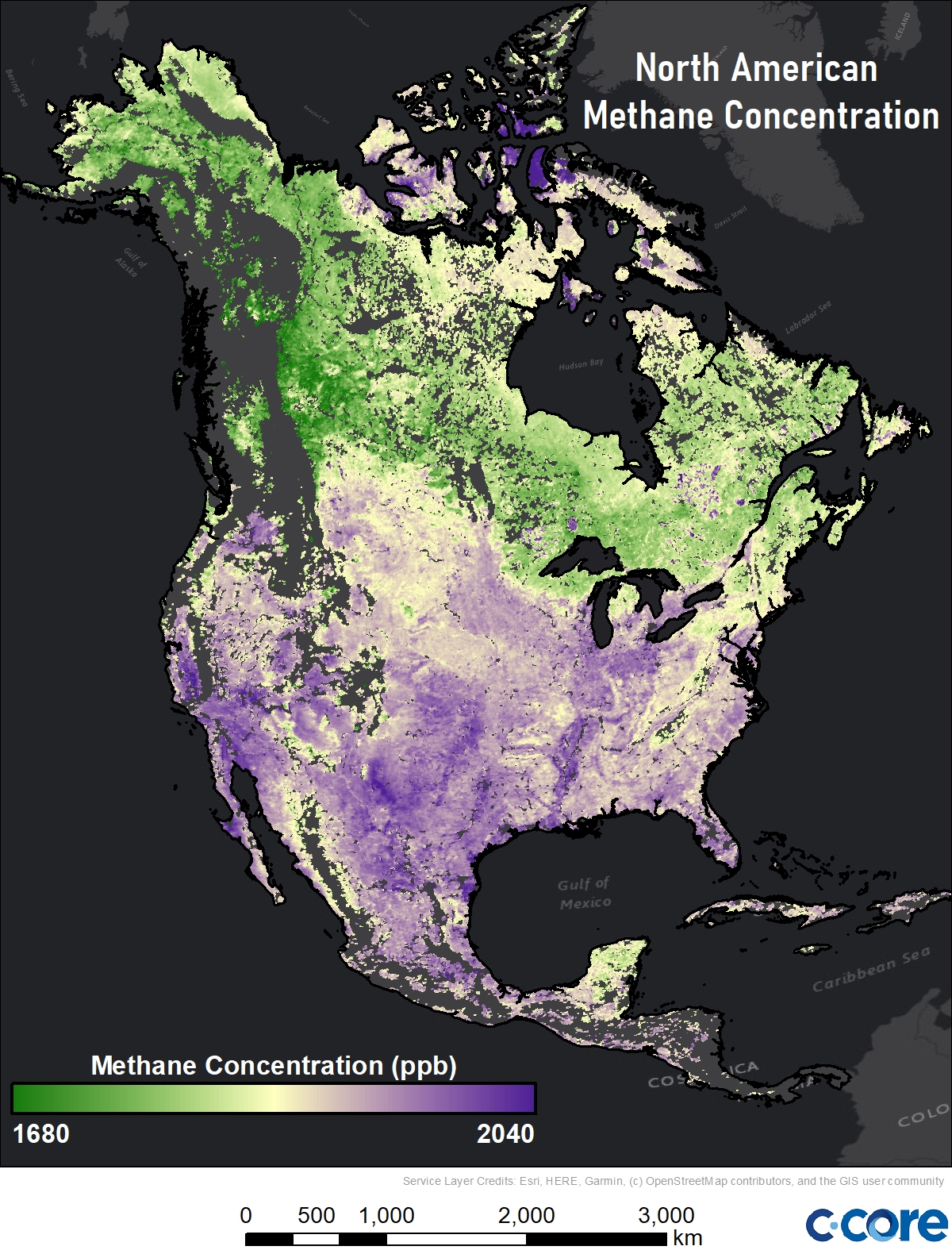With a relatively short lifetime in the atmosphere, methane is one of the most important anthropogenic greenhouse gases in the Earth’s climate system. The ability of remote sensing satellites to identify and monitor methane emissions on a global scale and over long periods of time, as compared to field measurement efforts, is a significant advantage. Until recently it was only possible to detect large emissions from space. However, with recently launched satellites from Montreal-based company GHGSat, it is possible to detect plumes from single emitters at high spatial resolution (25 m), with source rates above 100 kg/hour, which is ideal to detect medium to strong point emitters worldwide. C-CORE, in partnership with GHGSat, initiated a series of greenhouse gas (GHG) reduction projects in both offshore and urban settings. The main objective in offshore monitoring is to develop the world’s first high-resolution monitoring of GHG emissions over water. This advances offshore emissions monitoring from concept validation with offshore platforms, to a solution ready for operation. In urban areas, the objectives are to quantify methane emissions at city scales and identify the emission sources through frequent monitoring.

Offshore methane detection in the Gulf of Mexico using Landsat-8 data

Methane concentrations across North America derived from Sentinel-5 data
